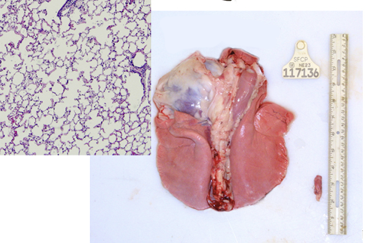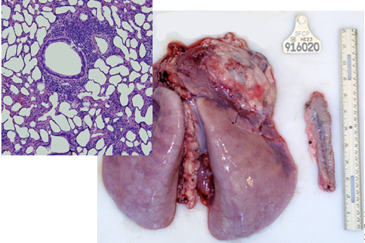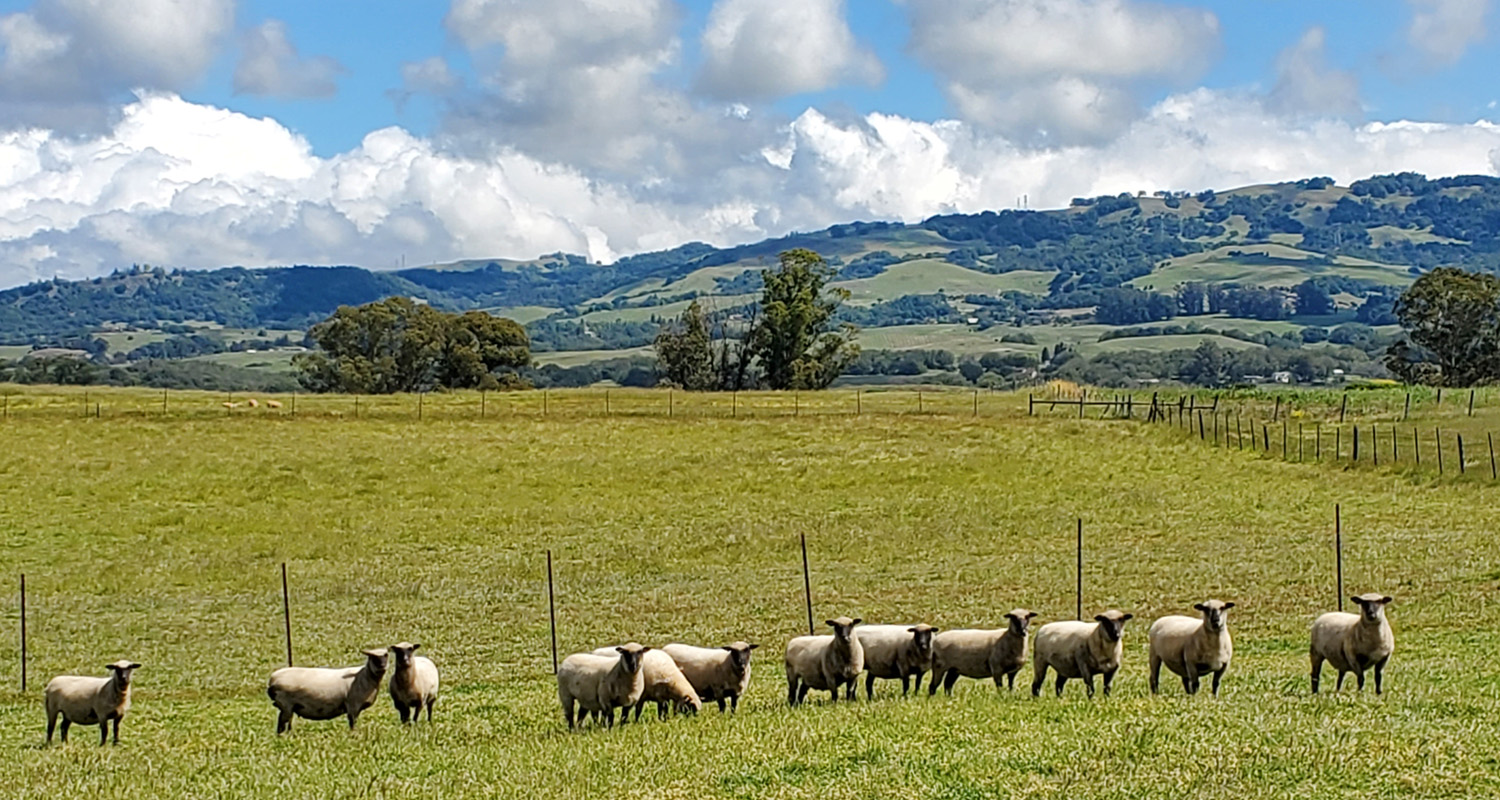Welcome to the OPP Society
We’re glad you found us!
OPP virus primarily invades the lung and udder
The function of the sheep’s lung and udder declines over time
— Click here to see how the cascade of pathology unfolds
and robs shepherds of profits —
OPP slowly compromises the function of the sheep’s
LUNGS and UDDER
LUNGS
Decreased oxygen exchange
Decreased metabolic efficiency
Labored breathing
Loss of body condition
Decreased vigor
Thin ewe “lunger”
UDDER
Lower milk production with age
Mature ewes lamb with udder
that looks full with little or no
colostrum/milk
Increased neonatal starvation or
Increased costly orphans
Decreased lamb gains
Shortened productive life-early culling
Extra lambing season labor
Increased replacement costs
The virus can also affect the joints and nervous system.
Snapshot productive comparisons of infected sheep to those not infected do not accurately measure its economic costs.
— The costs accumulate over time. —
Description of a Typical OPP Ewe
“Let’s suppose that I have a good ewe lamb that I breed to lamb at two years of age. She gives me a single, a lovely strong lamb. I forgive her for giving me a single since it is her first and she is a twin herself. Next year I get twins from her. Those are also nice but not quite as good as the previous one. That is assumed natural since they are twins. Mother is now three and since she raised twins she is not in as good a condition going into breeding as she was the previous year. In next lambing—she is now four—she twins again and this time the twins are born a good size but fail to thrive. And mother is positively thin after raising these two. At this time many would decide to sell the ewe, either (hopefully) to slaughter or to someone looking for cheap breeding stock. After all, the ewe is only 4-1/2 years old. If she has been sold for breeding (good buy, she is a twinner and should have a few years left) she will probably be dead two years later. This would be a typical OPP ewe.”
STEFANIA DIGNUM (1945—2007)
RENOWNED ICELANDIC BREEDER
THE SHEPHERD MAGAZINE, 1989
Diagnostic Aid
OPP researcher Dr. Mike Heaton uses these photos to show the contrast in normal and diseased animals from the USMARC flock. He has found that >90% of the sheep that show OPP at necropsy have no obvious clinical signs.
THE EFFECTS OF OPPV INFECTION ON ADULT SHEEP AT THE USDA MEAT ANIMAL RESEARCH CENTER (USMARC)
Uninfected ewe (left) and OPPV-infected ram (right). Insets: microscopic and structural appearance of the lung and mediastinal lymph node in uninfected (left) and OPPV-infected adults. The key features of OPPV infection at necropsy are the interstitial pneumonia characterized by the blotchy grayish-lavender color, increased size, firm texture, and lack of deflation of the lungs. Also characteristic of OPPV infection is the cigar-sized enlargement of the mediastinal lymph node.
M.P. Heaton and W.W. Laegreid. 2006. USMARC, Clay Center, NE unpublished results.

HEALTHY 
OPP

